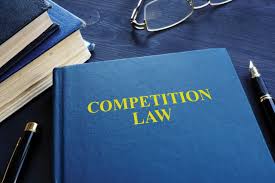Subject Code :- BLAW2010
Title :- Practical Consumer and Competition Law
Assessment Three: Case Study
Kanon Ltd is the largest manufacturer of printers in Australia. It currently has an 80 per cent market share. It has held this market share for almost five years.One of the reasons for holding such a large market share is its patent protection. Patents protect the most innovative features of its printers. Kanon has found that the printer performs poorly when used with cheap paper. Kanon is concerned that customers might assume that Kanon printer is of low quality when in fact they get the low quality printing because of the low quality paper.
BLAW2010 Practical Consumer and Competition Law Assignment-Curtin University Australia.

Kanon decides to supply its printers to the retailers on the condition that retailers also commit to buy papers from its subsidiary Express Papers. Kanon knows that its decision might have an impact on other manufacturers of high quality paper. However Kanon is highly concerned about its own reputation and image as the best printer in Australia.
Meanwhile, in the next suburb from where Kanon operates, are a number of business which sell floor materials to consumers in Perth namely Sparkle Floor Glitter Floor Timber Floor, and Wood Floor. There has been a reduced demand for floor materials for the last 12 months. These four companies are fiercely competing against each other for customers. The manager of Sparkle Billy Bradford invites the managers of Glitter Timber and Wood for a lunch time meeting at a restaurant. Billy says to the others:
Gentlemen, at this economic downturn situation, there is no point of competing against each other. Let’s all sell our products and make some money. My idea is to divide our customers: I will make business in the West Glitter in the East, Timber in the North and Wood in the South. We are not going to sell to each other’s customers. If a customer from the South comes to me I will give a quote of higher price. Glitter and Timber will do the same.The customer has no option other than to buy from Wood. We all make money by this.
The managers of Glitter and Wood agree on the proposal. Glitter manager, Jack Sims adds, ‘Let us also set our price list. This is among us only. We will decide each month over lunch or coffee how much we are going to charge our customers’
Timber’s manager Gerald Harrison agrees but with hesitation. These corporations start operating according to their new deal. However Timber now wants to get out of the deal and wants to complain to the relevant authority about this deal.
Meanwhile, due to slow business Jack Sims also decides to cold call homes to sell flooring. He asks two of his employees Sarah and Jim to call potential customers by offering a free demonstration of floor cleaning products. He tells Sarah and Jim when people make appointments to also take floor samples and try to interest the people to buy new flooring for their homes. He tells Sarah and Jim to be respective and talk politely to the people.
Jack is very happy about this and reckons with the two new initiatives, he stands an even better chance of selling more of his floor supplies. Sarah and Jim got to an appointment at Beverly’s home and after the demonstration, which Beverly is very happy with, they bring out some floor which they think would go well in Beverly’s house. They inform Beverly that these are the last in stock and she would be getting a good discounted price.They also inform her that the floor materials are so popular that they have been selling out fast.
Beverly, decides to buy the timber flooring and provides all her credit card details. When the finish signing the documents, Sarah and Jim pack up their van and before leaving, Beverly asks how she can contact them and if they can leave their names and direct phone lines ‘in case she has any further questions’. Sarah then gives Beverly her business card and they leave.
BLAW2010 Practical Consumer and Competition Law Assignment-Curtin University Australia.

Instructions: Please read carefully
Answers to the Case Study should demonstrate that you understand and are able to apply the relevant laws in your discussion in order to develop a logical and well written argument.
You will need to:-
(a) Identify and discuss the various legal issues arising out this Case Study.
(b) Critically analyse the issues which should be based on sound judgement and the application of legal principles.
(c) Identify and explain the breach(es) of the relevant provisions of the Australian Consumer Law and/or the Competition and Consumer Act
(d) The discussion should use relevant and appropriate primary (statutes and case law) and secondary (articles, books etc) sources.
Further Instruction –
This Case Study is a problem-based study.
The Due date is Friday 20 th November at 5 pm (AWST)
The word limit is 4000 including footnotes and references (excludes cover page)
Please use the Chicago or the AGLC referencing styles
Provide a list of references at the end of the paper if using the Chicago Referencing Style (this list is also included in the 4000 word limit)
Please indicate the word count on the cover page.
Headings, subheadings, quotations are all included in the word count.
Please refer to the marking guide.
Late submission and Assessment extension: Please refer to the Unit Outline
in relation to this.

BLAW2010 Practical Consumer and Competition Law Assignment-Curtin University Australia.
Academic Integrity (including plagiarism and cheating): Please to the Unit
Outline in relation to this
